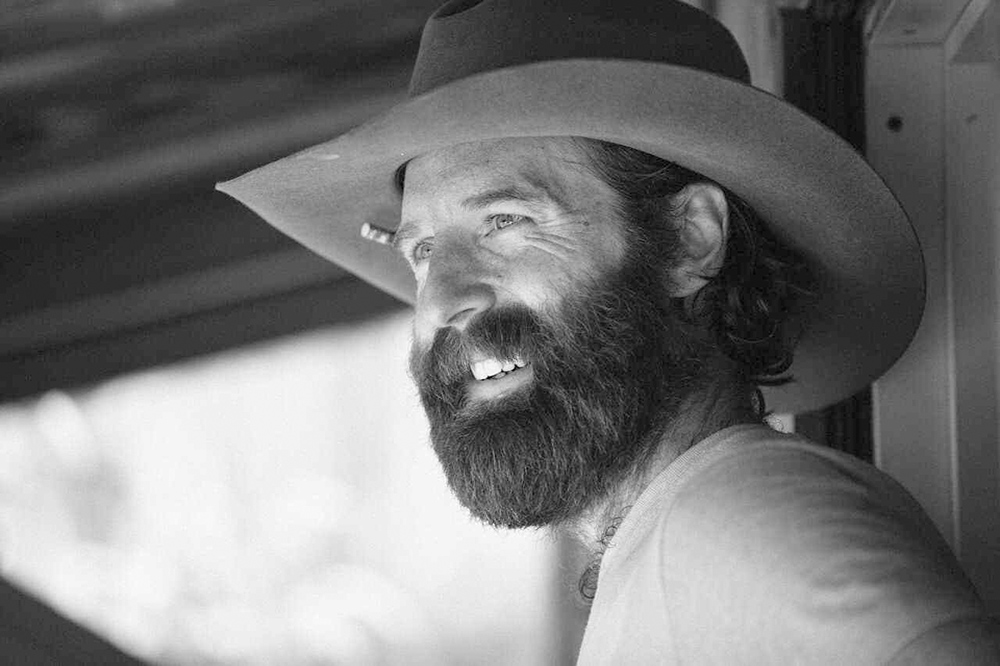By Sean Dietrich
“I am not an artist,” said Ginni Bonell. “I can barely draw a straight line.”
Bonell lives in Virginia. She is in her mid-60s, with long silvery hair and you get the feeling that this woman listens to Carole King or James Taylor. She has that vibe.
In fact, I would bet good money that this woman owns at least one 1970s album containing the song “Shower the People.”
She threw open a huge garage door for a camera crew and said, “This is where the magic happens.”
Inside is a makeshift studio filled with nothing but scrap wood and paint fumes. There are hundreds—no, there are billions of little pine blocks covered in wet paint.
These aren’t fancy works of art, they are white squares with acrylic pink hearts and simple writing. Two words.
Be kind.
In today’s world, kindness is a pretty rare concept. I just saw a man in traffic, for instance, throw a full Coke bottle at another car on the interstate.
The other car returned fire by throwing a fast food bag. French fries scattered all over the highway. A Big Mac nearly hit my windshield.
These drivers were definitely not listening to James Taylor music.
Bonell’s idea for the handmade signs happened one day after watching the local news. The headlines were depressing, and a person can only take so much televised tragedy, environmental destruction and senseless acts of politics.
When Bonell was out for a walk to blow off some steam and clear her head, she saw a garbage heap that caught her eye.
A big whiteboard was in the trash, like the kind you’d find in an office or classroom. She took the thing home and placed it in her yard the way you would a real estate sign. She wrote messages on the board. Like this one:
“In a world where you can be anything, be kind.”
It was just for the neighborhood, mind you. A small reminder not to throw Chicken McNuggets out vehicle windows.
The little whiteboard was an immediate hit. It became famous.
Sometimes Bonell would be in her house—probably listening to James Taylor records—and she’d hear honking horns from cars on the street. Neighbors would cruise by, waving arms, cheering, giving a thumbs up. People stopped to snap photos.
“BE KIND!” some of them would yell.
Bonell had struck a nerve. The next day she went into her garage, probably cranked up her music, and began slinging paint.
We can only speculate what kind of music she might have been listening to. So we choose to speculate that she was listening to “Shower the People” by James Taylor since this makes for a better column.
But anyway, Bonell had a jolt of creative energy—possibly fueled by the aforementioned hit single from 1976—and she painted her masterstroke.
She lugged this new creation from her garage into her yard. It stood like a monument. This was no mere whiteboard. This was art.
“Be kind.”
It wasn’t long before a neighbor saw the sign and asked for one. Then, a few teachers wanted some for their classrooms. Then more people asked for signs. And a few more.
This officially marked the end of Bonell’s spare time. It wasn’t long before she was showering the people with signs. And by “people,” I mean thousands and thousands of people.
Today, Bonell has lost count of how many signs have been given away. It could be hundreds of thousands. Maybe more.
The signs have made their way past city borders, into other states and other countries. She made the nightly news a few times. Newspapers started writing about the signs. Governors were asking for them. Politicians everywhere from Michigan to Florida wanted their own, too.
Pretty soon, Ginny was dishing out signs faster than nacho cheese at a NASCAR race. Sometimes more than 100 signs at a time.
And still it grew.
Kids started duplicating the signs. People from other places were doing the same thing. Children, teachers, nursing home residents, Boy Scouts, Girl Scouts, Little League teams, art classes, and, of course, regional Realtor associations.
Anybody who had a paintbrush began making “be kind” signs. They were being shipped via the U.S. Mail, hand delivered by locals, given as gifts, displayed on front doors and propped up in dirt yards in remote Third-World nations.
Today, the signs reside in every U.S. state, nearly every major American city, and in 38 different countries. They stand in neighborhood lawns, car windows, storefronts, flowerbeds, porches, restaurants, coffee houses, mom-and-pop shops, meat-and-threes, county prisons, halfway houses, courthouses, dog houses, outhouses, henhouses and used car dealerships.
Chances are you’ve seen one before and didn’t know it. I recently saw one in a gas station. That same day my wife saw one in a truck windshield.
The signs are free. Always have been. Bonell gives them away, and so does anyone else who makes them. That’s the rule. Anyone who wants a sign can have one. Anyone who wants to paint one should.
“People are always amazed when I tell them it’s free,” said one sign maker.
Ginni’s signs are not accompanied by online fundraisers, self-promotion, annual meetings nor fancy merchandise. No T-shirts, ballcaps, bracelets, bumper stickers, Home Shopping Network sales pitches or theme park gift shops.
The signs are just scrap wood and cheap paint. But the acrylic colors from this woman’s garage pepper the globe.
“It’s so simple,” Bonell said. “And so powerful. I just think we should throw kindness around like confetti.”
In other words: Shower the people.

